* The following is an excellent editorial piece on a volunteering experience with the It’s Not Just Mud group, written by Brent Danley Jones, posted with permission.
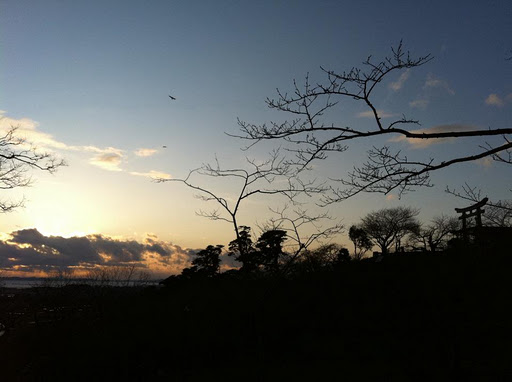
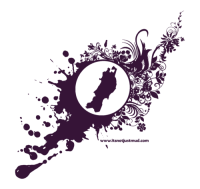 THE PROGRAM:
THE PROGRAM:
It’s Not Just Mud (INJM) is an NPO started by an Englishman-turned-teacher-turned volunteer leader who upon seeing the extent of the damage to the coastal city of Ishinomaki decided to start an organization to support a grass-roots rehabilitation effort in the community. Although only recently developed, the power of social media and the positive reputation of the program created a steady flow of volunteers. Focusing primarily on rebuilding, there is also a strong community aspect and the very presence of the volunteers can help give hope. INJM is not alone in the effort as other volunteer organizations in the area overlap and work together. The people of Ishinomaki, even nine months after the initial disaster, are still living in the second floor of destroyed houses or have not yet moved out of temporary housing, struggling with unemployment and supply shortages, while picking through the rubble to recover what they can from lost lives. There is a sadness that has settled about the area that shows signs of lifting as citizens of the city begin to reassemble, and the presence of volunteers and their efforts help warm against the winter cold. More than saying “Ganbarou Tohoku” (do your best banners displayed to support the most affected region) there are people here, taking no pay, willing to do whatever task, big or small, that will help return a sense of normalcy to an area that is still correctly categorized as a disaster zone. In addition to contributing their hours of work, volunteers in INJM give a bit of strength and spirit, as if to say “You are not alone” through their actions. Between the contributions both tangible and invisible, INJM is supporting those who wish to do their part for the affected people of Japan.
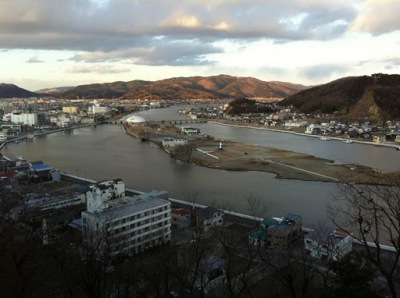
THE CITY:
Ishinomaki is a coastal area big enough to get its own stop on the bus line from Shinjyuku to Sendai. Even 9 months after the highly destructive combination of earthquake and tsunami, the damage remains evident. With limited funds and resources, the slowly progressing process of cleaning up and rebuilding is still the daily task for a majority of its people. Before, in the area based near the volunteer organization, there were about 1000 families living in an area of the city where there are now less than 200 remaining. Some parts of the city have been rebuilt, some businesses have reopened, and vending machines again line the streets, however there is an eerie feeling when driving along the main city strip and seeing brand new buildings neighboring a shop front that is still bashed in, furniture and debris scattered and left as it was months before. There is a large ship still breached out of the port and a gigantic red oil tower barrel in the divider section of a main highway. Garbage dumps have stacked hundreds of cars in alien-like pyramids. Barren landscapes near the coasts are like house graveyards, where only foundations and wreckage are left with a few shaky but still standing structures in the distance. There is not a suburban location in the whole city where you can turn 360 degrees and not see some sign of the catastrophe that took place. The damage to the city you can’t see is left in the hearts of its people, many of whom are still living in the shadows of their formers lives. The job of volunteers is to do what they can to repair both. As time passes, glimmers of hope can be seen as well: new shipments of supplies being given away on the streets, small memorial shrines along roads, families restanding their family’s grave stones, stores reopening, students biking on their way to refurbished schools–there is a resilience here that acknowledges the horrendous past, but continues to push forward into a better
tomorrow.
THE DESTRUCTION:
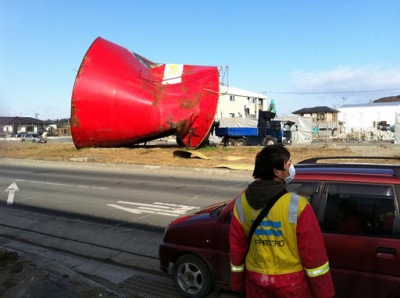
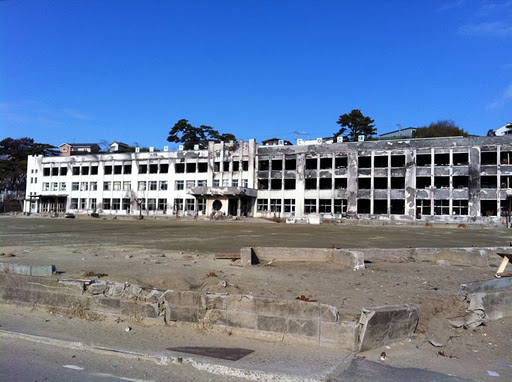
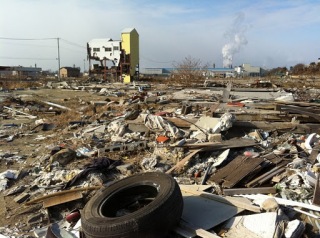
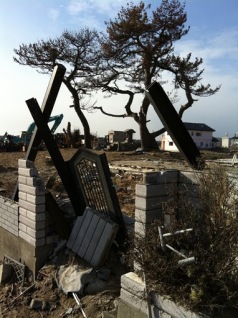
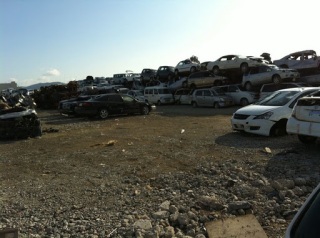
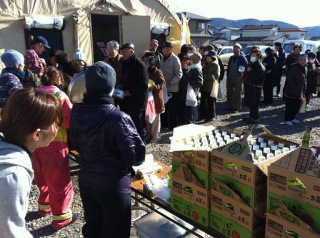
THE WORK:
Everything from breaking down and entire first floor’s drywall to helping a community tent lead a soup kitchen and bingo day for elderly residents, from cleaning photos of sports days twenty years ago to helping replenish the dwindled supply of shellfish, the work is varied and volunteers go wherever they’re needed. No labor skills are required to join, so those who volunteer with INJM take the jobs that simply need to be done. Sometimes volunteers may work with other organizations, be they other foreign aid organizations or local community efforts, going wherever they’re told, to do what they are requested to do, as best they can so someone else with plenty to deal with doesn’t have to. Because everyone is making this effort, it adds up little by little into progress. It can be surprisingly fulfilling to do what would even seem like repetitive work, such as taking nails out of rotted boards barely holding together a house for six hours, but because you’ve done it someone else doesn’t have to, and they will move to work onto the next stage in the larger plan to fix a house in the grand scheme project of rebuilding a city. Every strike with a sledgehammer or conversation listening to the story of loss puts repair and healing another step further. The work can be hard, but it not usually to the point of exhaustion, and always in the company of other like-minded volunteers whose positive optimism helps ward off some of the residual darkness that still envelops many corners of the city.
THE WEATHER: S’cold.
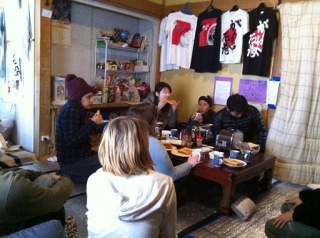
THE HOUSE:
Through the power of social networking, when originally setting up INJM they were looking for a home base to live, and through extensive tweeting and retweeting found someone willing to leave a house standing that was planned for demolition. It was fixed up along with a neighboring home and both now serve as the main base of operations. Over 30 volunteers can fit in and hopefully no one snores. Meals are done banquet style and everyone is in charge of keeping the place clean and functional. The main room is the “lounge” where most spend their time when not out working. It feels like a commune of sorts, and when you get the right sort of people together (and from my albeit limited experiences they were always the right sort) you’re going to want to put down your book or laptop and be a part of the house, and you’ll most likely not want to leave.

THE ROUTINE:
The basic procedure goes like this: wake up –> toast –> work –> get home –> chill –> onsen –> party –> sleep. Volunteers come up for days, sometimes weeks at a time, with others who came and never left. Volunteers, it seems, never really say goodbye–they most always come back. This, I would say, is due to a casual genius of the work and structure of the program. Unlike some other larger-scale efforts which develop many rules and procedures for those who come, INJM has a basic routine of working and living that gets the basics in order so that necessary things get done while leaving the rest of the time fairly free. Volunteers choose assignment crews to join and work from about 9am-4pm. After completing the jobs, everyone eats, sleeps, and lives together in two houses. No mandatory tasks outside of work are administered to volunteers, but when you see people preparing for dinner or cleaning up afterwards, you feel compelled to assist as well, and so everyone does so without being designated to tasks. It’s quite amazing how fast new arrivals, myself included, quickly fall in line with this system of administration-free responsibility and seem to adjust to life in the house. The rest of the available time outside of work and chores is free to be used at the discretion of volunteers, which usually takes the form of gathering in the main (heated) room where everyone comes to talk and spend time with the others there from all over Japan and the world. The feeling of working with these people, all good people, and then spending the nights together in revelry is a great source of motivation; the relaxed atmosphere of the base camp allows the volunteers to unwind while becoming better friends, making everyone look forward to spending the next day of work together. Also, after most everyday of work, there is an onsen trip to relax and recuperate after a day’s work and get everyone clean at once instead of having up to 30 people lined up for the shower. This is also a… powerful bonding experience, in that you will most likely be sitting naked in a jacuzzi with friends made that same day. Lights out by midnight to be up at 8am for a toast buffet.
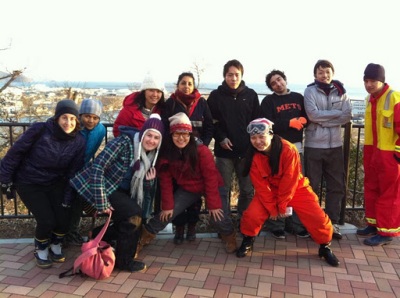
THE PEOPLE:
The work is the goal, and the people are the energy; volunteering is a mix of both. The people I met while volunteering were an outstanding group of positive, humorous, quirky-to-eccentric folks from all around the world. An Australian oil rig towboat deckhand, a British fashion designer, a kindergarden bus driver from Brussels, a New Yorker with a passion for roller disco working at a cosmetics production factory in Tokyo, a radio engineer from Oklahoma who came just to volunteer, Japanese company employees who take their vacation just to help Ishinomaki, English teachers from around Japan using their breaks for a purpose, a group of Japanese college students, a group of study abroad college students, and a deaf Japanese girl who taught everyone Japanese sign language during her visit that people were still using even after she left. So many people from so many backgrounds, here in Japan for so many reasons, but all of them brought here for the sole purpose of doing something for nothing, volunteering to give something back. This spinning world is powered by such acts of kindness. There wasn’t a bad apple in the bunch, even if some are quieter than others everyone will find something to laugh about, something to add to the group, and everyone works to validate their being there. What really surprised me was just how fast you could feel like real friends living with these people; I think I may have come at a particularly good time when a lot of great folks happened to show up all at once, but could scarcely believe how quickly not just a few people warmed up to one another, but how everyone came together as a group, and I’m not the only one who didn’t want to leave partly because of that. Doing good work with good people sounds a lot better than warming my desk at the office.
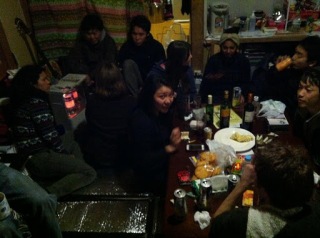
THE PARTY:
Upon arriving back home after the nightly onsen trip, preparations are made for dinner, and it’s a makeshift banquet hall where everyone eats together. Now properly bathed and fed, the party takes the night. As many know, when I say party, I rarely mean dancing, flashing lights, and bad club music. A party is anywhere that good people are laughing and drinking long into the night, and the parties here are every night to bond and blow off steam and rejuvenate the soul for the next day’s work. Don’t get me wrong, the purpose of all volunteers being here is to help the people of Ishinomaki as best we can, and that goal of making an outstanding contribution to the community is never surpassed by anything else. With that work completed, however, the night is your own, and spending time with these amazing members and happily chatting and laughing for hours seems to be the best way to spend time before bed. A few chu-hi Strongs from the local convenience store and laughter amongst friends is the best thing to get you into a deep sleep and avoid the chilling cold that takes the house as soon as the lively conversation comes to a close (and the heating stoves are turned off). Some of the dumbest moments led to some of the biggest laughs, such as the story of Oklahoma’s hometown single stop sign parade, or certain complications involving a virgin marriage and birthday candles, and the true nature of dance parties. The Party is where you make new friends of complete strangers and I made a baker’s dozen in only five short days.
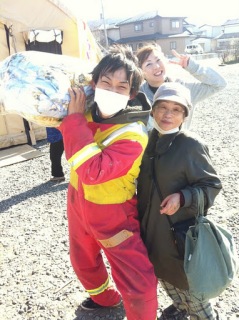
THE RESULTS:
A feeling of accomplishment. The positive vibe from helping people through hardship. Many new friends. Knowing you’ve made a difference. Having finally been able to aid in an effort I felt compelled to assist in ever since March 11th, 2011, albeit if only in a small way for a short time. Smiles from those around you and the validation of doing a little bit to help the country you live in. Actually going to Tohoku and doing your best after reading hundreds of signs saying “Tohoku, do your best!” I was originally planning on staying 3 days, maybe four, but ended up pushing all the way into the 5th, barely catching the last train home from Tokyo so that I could be up at 7am for work the next day. Others felt the same, wishing they could have stayed longer, and entire groups revised schedules to be able to continue volunteering. Throughout my life I don’t have a history of giving back. I enjoyed it when I did, but didn’t seek out the opportunities often. Something about the work, organization, situation, and people of It’s Not Just Mud really came together to instill a sense of having done something good that I hadn’t felt in too long a time. I’m already planning my trip back when I’m back on break, and thinking about who I’m going to take with me. Volunteering in a disaster zone gave me a new look at myself, to see the things I was worrying about as insignificant, and allowed me a better look at the bigger picture. This world and the people in it thrive off kindness. Even when politics and big corporations, mother nature, and jerks-in-general seem to be making a bigger change than good actions, it is all I can do to participate in a program like this so at least I’m doing something positive to help those around me, hoping those good energies are received and duplicated. It’s motivating, and I plan on taking this as a fresh start to a new year. And I’ll be back for more. Maybe you can be too.
 Please visit the blog of writer Brent Danley Jones to follow up on his further adventures and writing. His Profile states that Brent is a “Writer writing from somewhere in Japan. Expect to see novel serialization, flurries of haiku, the occasional drinking song, and more metaphors than you can shake a stick at.”
Please visit the blog of writer Brent Danley Jones to follow up on his further adventures and writing. His Profile states that Brent is a “Writer writing from somewhere in Japan. Expect to see novel serialization, flurries of haiku, the occasional drinking song, and more metaphors than you can shake a stick at.”

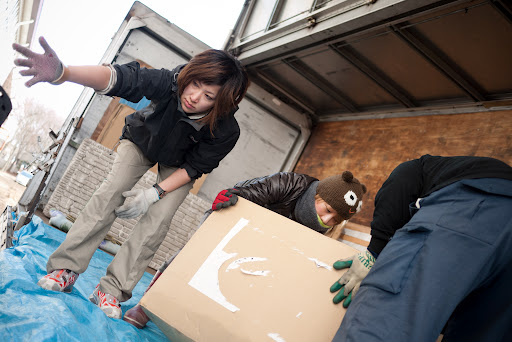
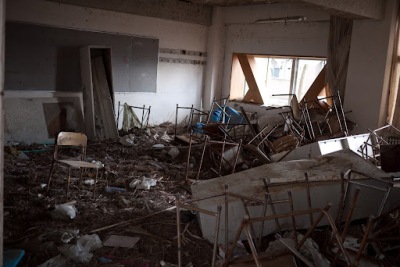
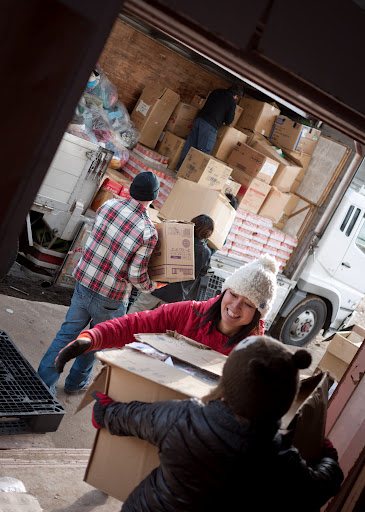

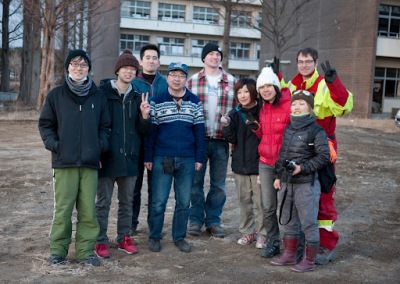

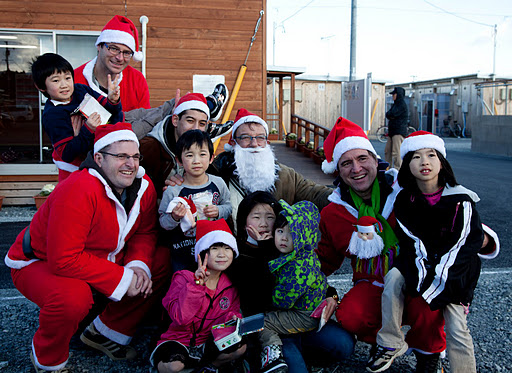

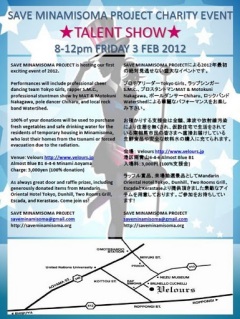

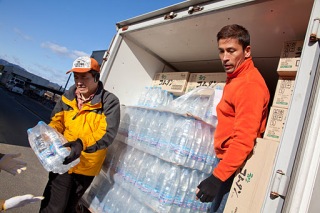
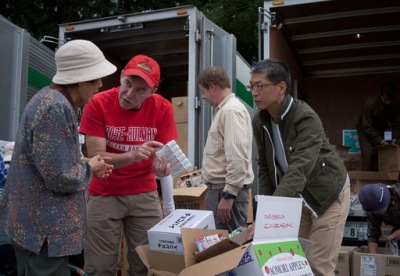
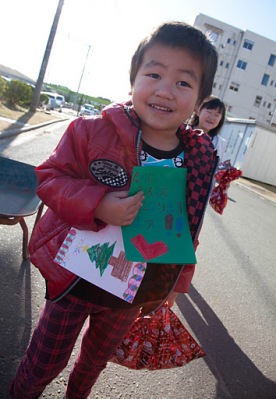
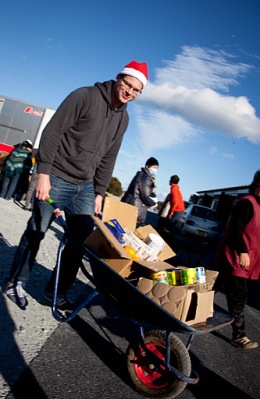















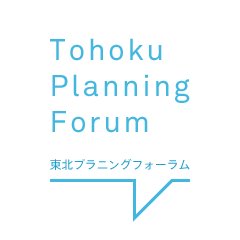
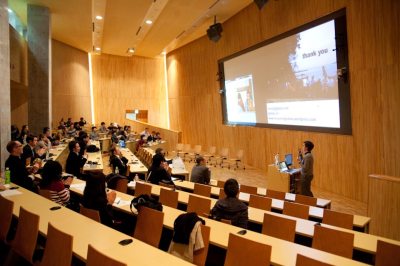
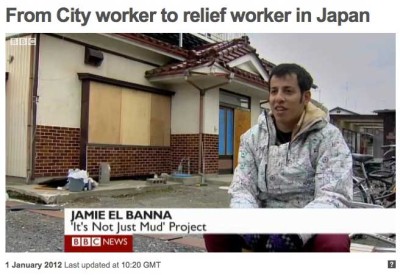


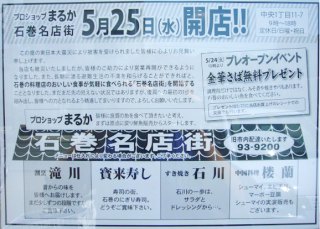





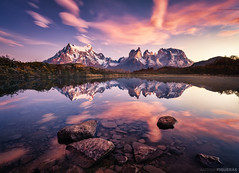



You must be logged in to post a comment.